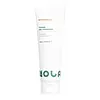What's inside
What's inside
 Key Ingredients
Key Ingredients

 Benefits
Benefits

 Concerns
Concerns

No concerns
 Ingredients Side-by-side
Ingredients Side-by-side

Water
Skin ConditioningSodium C14-16 Olefin Sulfonate
CleansingLauryl Hydroxysultaine
CleansingLauryl Glucoside
CleansingDisodium Laureth Sulfosuccinate
CleansingGlycerin
HumectantAcrylates Copolymer
Ethylhexylglycerin
Skin ConditioningButylene Glycol
HumectantRosmarinus Officinalis Leaf Oil
MaskingJuniperus Mexicana Oil
MaskingCaprylyl Glycol
EmollientCitric Acid
BufferingCentella Asiatica Extract
CleansingArtemisia Vulgaris Oil
PerfumingMelissa Officinalis Leaf Extract
Skin ConditioningMentha Suaveolens Leaf Extract
AstringentMelaleuca Alternifolia Leaf Extract
PerfumingOcimum Basilicum Oil
Masking1,2-Hexanediol
Skin ConditioningBetula Platyphylla Japonica Juice
Skin ConditioningMelaleuca Alternifolia Leaf Oil
AntioxidantPentylene Glycol
Skin ConditioningMelaleuca Alternifolia Leaf Water
AntimicrobialLactobacillus Ferment
Skin ConditioningMadecassoside
AntioxidantPortulaca Oleracea Extract
Skin ConditioningHouttuynia Cordata Extract
Skin ConditioningHydrogenated Lecithin
EmulsifyingEctoin
Skin ConditioningWater, Sodium C14-16 Olefin Sulfonate, Lauryl Hydroxysultaine, Lauryl Glucoside, Disodium Laureth Sulfosuccinate, Glycerin, Acrylates Copolymer, Ethylhexylglycerin, Butylene Glycol, Rosmarinus Officinalis Leaf Oil, Juniperus Mexicana Oil, Caprylyl Glycol, Citric Acid, Centella Asiatica Extract, Artemisia Vulgaris Oil, Melissa Officinalis Leaf Extract, Mentha Suaveolens Leaf Extract, Melaleuca Alternifolia Leaf Extract, Ocimum Basilicum Oil, 1,2-Hexanediol, Betula Platyphylla Japonica Juice, Melaleuca Alternifolia Leaf Oil, Pentylene Glycol, Melaleuca Alternifolia Leaf Water, Lactobacillus Ferment, Madecassoside, Portulaca Oleracea Extract, Houttuynia Cordata Extract, Hydrogenated Lecithin, Ectoin
Centella Asiatica Leaf Water
Skin ConditioningCoco-Glucoside
CleansingLauryl Glucoside
CleansingAcrylates Copolymer
Glycerin
HumectantArginine
MaskingHouttuynia Cordata Extract
Skin ConditioningYucca Vera Leaf/Root Extract
MaskingMacadamia Ternifolia Seed Oil
EmollientMadecassoside
AntioxidantAsiaticoside
AntioxidantHydrolyzed Hyaluronic Acid
HumectantTrehalose
Humectant1,2-Hexanediol
Skin ConditioningCaprylyl Glycol
EmollientEthylhexylglycerin
Skin ConditioningDisodium EDTA
Centella Asiatica Leaf Water, Coco-Glucoside, Lauryl Glucoside, Acrylates Copolymer, Glycerin, Arginine, Houttuynia Cordata Extract, Yucca Vera Leaf/Root Extract, Macadamia Ternifolia Seed Oil, Madecassoside, Asiaticoside, Hydrolyzed Hyaluronic Acid, Trehalose, 1,2-Hexanediol, Caprylyl Glycol, Ethylhexylglycerin, Disodium EDTA
Ingredients Explained
These ingredients are found in both products.
Ingredients higher up in an ingredient list are typically present in a larger amount.
1,2-Hexanediol is a synthetic liquid and another multi-functional powerhouse.
It is a:
- Humectant, drawing moisture into the skin
- Emollient, helping to soften skin
- Solvent, dispersing and stabilizing formulas
- Preservative booster, enhancing the antimicrobial activity of other preservatives
Acrylates Copolymer is used as a film-forming agent and texture enhancer.
After applied, Acrylates Copolymer forms a thin film cover that helps skin feel more soft. It can help sunscreens become more water-resistant.
It is also used to make a product more thick.
Learn more about Acrylates CopolymerCaprylyl Glycol is a humectant and emollient, meaning it attracts and preserves moisture.
It is a common ingredient in many products, especially those designed to hydrate skin. The primary benefits are retaining moisture, skin softening, and promoting a healthy skin barrier.
Though Caprylyl Glycol is an alcohol derived from fatty acids, it is not the kind that can dry out skin.
This ingredient is also used as a preservative to extend the life of products. It has slight antimicrobial properties.
Learn more about Caprylyl GlycolEthylhexylglycerin (we can't pronounce this either) is commonly used as a preservative and skin softener. It is derived from glyceryl.
You might see Ethylhexylglycerin often paired with other preservatives such as phenoxyethanol. Ethylhexylglycerin has been found to increase the effectiveness of these other preservatives.
Glycerin is already naturally found in your skin. It helps moisturize and protect your skin.
A study from 2016 found glycerin to be more effective as a humectant than AHAs and hyaluronic acid.
As a humectant, it helps the skin stay hydrated by pulling moisture to your skin. The low molecular weight of glycerin allows it to pull moisture into the deeper layers of your skin.
Hydrated skin improves your skin barrier; Your skin barrier helps protect against irritants and bacteria.
Glycerin has also been found to have antimicrobial and antiviral properties. Due to these properties, glycerin is often used in wound and burn treatments.
In cosmetics, glycerin is usually derived from plants such as soybean or palm. However, it can also be sourced from animals, such as tallow or animal fat.
This ingredient is organic, colorless, odorless, and non-toxic.
Glycerin is the name for this ingredient in American English. British English uses Glycerol/Glycerine.
Learn more about GlycerinHouttuynia Cordata Extract is more commonly known as Heart Leaf, Fish Mint, or Chameleon plant.
The components found in Heart Leaf give it antioxidant, hydrating, antimicrobial, and anti-inflammatory properties.
Heart Leaf is rich in flavonoids such as quercetin, apigenin, and more. It also contains polysaccharides, the most common type of carbs in food.
Flavonoids have been shown to be effective antioxidants. They help neutralize free-radical molecules. Free-radical molecules are unstable molecules that may damage our skin cells and DNA. The flavonoids in Heart Leaf also help soothe the skin.
Polysaccharides are naturally found in our skin. They play a role in hydrating and repairing the top layer of skin. The polysaccharides in Heart Leaf help moisturize our skin.
Studies show decanoyl acetaldehyde, a component of Heart Leaf oil, is effective at killing bacteria.
The name 'Fish Mint' comes from the herb's natural fishy smell. Is is native to southeast Asia and used throughout the continent for traditional cooking and medicine.
Learn more about Houttuynia Cordata ExtractLauryl Glucoside sugar- and lipid-based cleansing agent. It is created from glucose and lauryl alcohol.
This ingredient is a surfactant, making it easier to rinse oil, dirt, and other pollutants away.
A British study found lauryl glucoside to cause skin sensitivity for some people. We recommend speaking with a professional if you have concerns.
Other names for this ingredient include "Lauryl Polyglucose", "Lauryl glycoside", and "D-Glucopyranoside".
Learn more about Lauryl GlucosideMadecassoside comes from the super popular skin-soothing ingredient, Centella asiatica. It is one of four active compounds found in the extract of Centella Asiatica.
Madecassoside has antioxidant, anti-inflammatory, and hydrating properties. It contains fatty acids, amino acids, beta-carotene, and phytochemicals.
One study found using Madecassoside with ascorbic acid helped reduce the signs of aging and improved skin hydration.
Learn more about Madecassoside